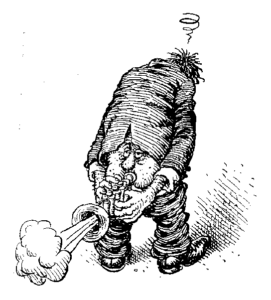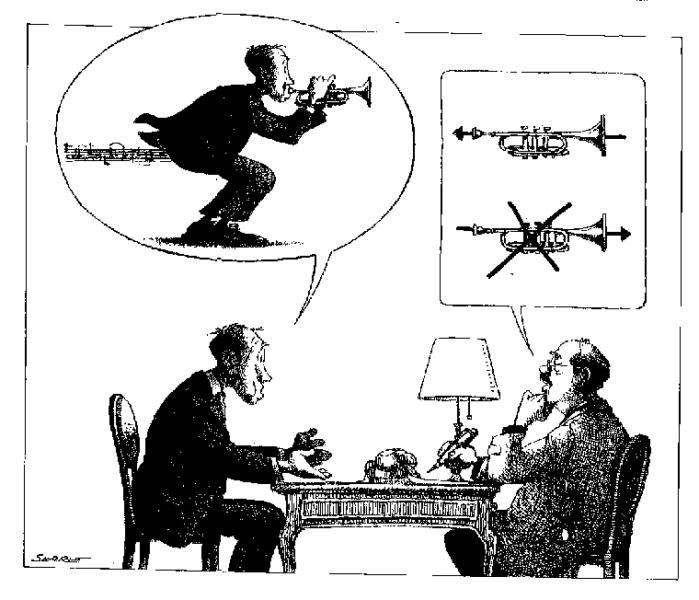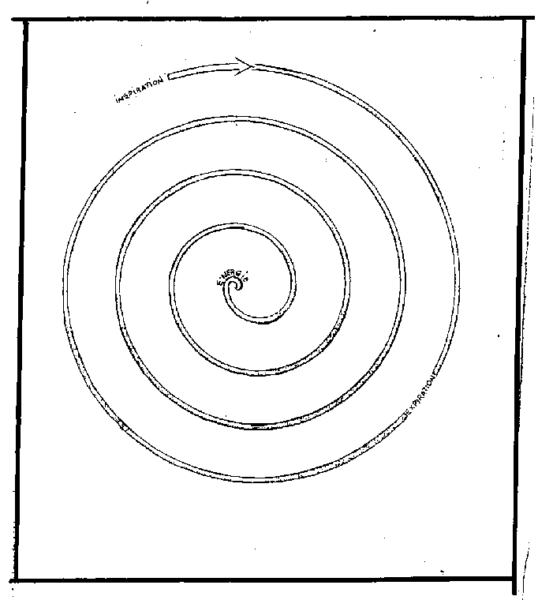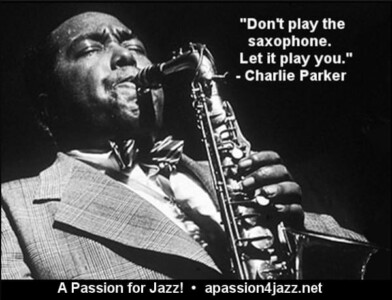Free Your Sound By Not Blowing
How your no-blowing makes the sound generated by your internal vibration deeper.
You Play Your Body
To ensure a clean and flawless emission, either fff or ppp – and without using the tongue edge for the first one ! -, you should precisely imagine the mouthpiece rim plugged to the sound source. Through your natural breathing, your exhaling extends your inhaling inwards and propagates your vibration down to the ground.
Thanks to his proprioceptive pictures, the music player drives his relaxation down to his feet, through his sound center (i.e. his natural breathing center point) to let the internal vibration of his singing « ah » vowel radiate around : then his transverse abdominus leads the vibrating exhalation backwards, ensuring thus the stability of the sound.
That was meant by Beniamino Gili when he used to drop his belly down to the ground in order to capture and maintain this feeling all along the emission of his sound, without disturbing the action of the diaphragm (see breathing and air).
In other words, the voice of the musician must play his body’s resonance, without addressing it directly, so as to avoid parasite contractions.
You should blow from outside towards inside and not the other way around…
You should imagine your embouchure in your belly.
Robert Pichaureau, Expressions favorites (Translated by Guy Robert)
Feel like playing inside your body.
Your breath flows inwards, certainly not the other way around.
Your instrument will play you.
The singing breath is enough.
If you don’t vibrate, then your breath is not warm enough.
Your breath should flow out through your ears.
Your breath should flow out through your neck.
You should feel as if your breath flows out from your whole body, but not from front.»
The Artist Forgets About His Body
George Kochevitsky shows in The Art Of Piano Playing how you should avoid any apparent physical motion, in order to enhance the quality of the result of your musical intent.
Forget about your body, and concentrate on your relaxed vibration flowing down to your heels (while you are standing up like the sax player, or being seated like the pianist) : the solid singing sound then surges around. Localize your sound center point, and free your diaphragm so that you feel as sitting on it, then filling your sound with overtones.
{ Steinhausen on the psychic origin of technique : in 1905, several months after the appearance of Rudolf Maria Breithaupt‘s Die Natürliche Klaviertechnik, Dr. Friedrich Adolph Steinhausen’s Die Physiologische Fehler und Umgestaltung der Klaviertechnik (“The Physiological Misconceptions and Reorganization of Piano Technique“) was published. }
Following Steinhausen’s motto that we cannot teach our body how to move, the psycho-technical school suggests that the more our consciousness is diverted from the movement, and the stronger it is concentrated on the purpose of this movement, the more vividly do artistic idea and tonal conception persist in the mind. Consequently, the artistic conception creates a desire for its realization, the will impulse occasioned thereby becomes more energetic, the needed natural movement is found more easily, and the process of its automatization is accomplished sooner.
« The roots of technique are in our central nervous system. The problems connected with muscular conditions and outward appearance of our playing apparatus are important, but they are secondary. »
George Kochevitsky, The Art Of Piano Playing
warm air is stable
You sure must not blow, since the air is not to be pushed out, but you rather do sing internally and downwards, as Alfred Tomatis demonstrates it in The Ear And The Voice : the vibrating air is warm, and that can be felt by feeling the sax neck, which can even be considered as an evidence for your fat and lived-on sound quality.
Thanks to your downward letting-go accompanying your exhalation, your flexible triggering of your inner vibration propels rich vocal harmonics : you are then consuming very little air, which you can imagine like it were recycling within the body, at the diaphragm center.
« The two lower vocal cords are drawn together and vibrate through emission. The vibration is caused by air passing across the cords. The volume of air is so small that it seems almost spontaneous and automatic as with speech. The brain essentially regulates the tension of the vocal cords to keep the flow of air at a minimum, so that the vibration corresponds to the desired pitch.
« Whenever the thorax contracts prematurely, it prevents the diaphragm from functioning to its full extent. »
« (…) In order to avoid pushing when you sing, you need to notice certain proprioceptive sensations.»
« You must learn to conserve stored air and to give out the least possible amount, as if you were distilling the sonic flow in some way. (…) The more slowly and regularly the flow emerges, the less underlying tension results, and the more easily the larynx works. »
Alfred Tomatis, The Ear And The Voice
let your singing go down
Upstream from his instrument, the musician should sing downwards, the same way the singer behaves.
For a wind player, concentrating on his inner vibration is antagonistic to the action of blowing, which would trigger an outwards deconstructing effort : hence it is absolutely recommended not to blow, not even to want to do it !
By and large, driving your internal vibration appears as paramount for any musician : you can achieve this control of your internal vibration and check it out by downwardly extending your attitude reached at the end of your natural inhaling, which enforces your anchoring in the ground.
« The great art consists of not pushing, of remaining in a state of supple tension, and of avoiding undue muscular effort.»
Alfred Tomatis, The Ear And The Voice
From this point on, you feel the air column opening from the sound source down to your heels. The vibration radiates deep inside, like the recycled water jet gushing and feeding the basin center.
« The air column vibrates and recycles like the water jet at the center of the basin. »
Robert Pichaureau, À tous vents…(Translated by Guy Robert)
« This is essentially a way to self-awareness and self-knowledge, a search for the movement from the inside to the outside, from the center to the periphery (…)»
Dominique Hoppenot, Le violon intérieur (Translated by Guy Robert)
Do Not Blow Your Playing !
You should certainly not blow at this point, because you are already sitting on the air, with full confidence, and you readily play without any blowing noise disturbing the emitted sound : actually, either your tongue is not active, lying still in the back of your mouth, or it moves backwards from the mouthpiece rim to let the reed vibrate. There, you actually sing, using as little air as possible, and making out that actual playing implies no blowing : blowing is not playing, since playing is breathing (think about the French expression, “Souffler n’est pas jouer“), as Joe Allard used to say (see breathing and air).
« In your actual sound to come, which is not worked out yet, you can find all colors, vibrations and overtones : your sound must be lived through, it is not to be worked out. »
Robert Pichaureau, La leçon de trompette (Translated by Guy Robe
« Finally, years later, I realized the importance of Joe’s exercises and explanations : the “fat“ bottom lip, the abdominal breath, the “e“ position for the back of the tongue, anchor tonguing for the tip and more.
These were guiding principles and once understood, it meant that you were playing the saxophone as intended, as an extension of your voice, not as some separate piece of brass that you fingered. »
David Liebman, Remembering The Master
And Charlie Parker used to mean that the saxophone should drive the horn player :



